
Honda CR-V Review (2023)

Introduction
As the CR-V gets yet another incarnation, six is a happy number for Honda.
This Japanese SUV has been around for almost 30 years now and, in that time, it’s gone from semi-utilitarian unpopularity to a car that was reportedly the sixth most popular car in the world last year, selling over 600,000 of them around the globe.
The CR-V is not only an important car for Honda, it’s the most essential – more vital to its business than the Jazz or Civic.
Honda is aiming to make strides with its new SUV, and first impressions are that it's trying to take the CR-V more upmarket.
The old model wasn't flawed but looked fiddly, whereas this new one has a flatter, more premium presence.
Believe it or not, the CR-V stands for "Comfortable Runabout Vehicle", which is a quintessentially Japanese name, given the nation often gives it cars monikers that translate fairly hilariously into English.
Japan has previously named two cars the Mini Active Urban Sandal and the Mysterious Utility Wizard.
Neither of them were Hondas, thankfully.
Select's rating score* - 3.9 / 5
At a Glance
The old Honda CR-V was a bit… meh.
It wasn’t monstrously ugly, but it was neither a wondrous work of art nor particularly memorable.
The new one, though, has presence in abundance.
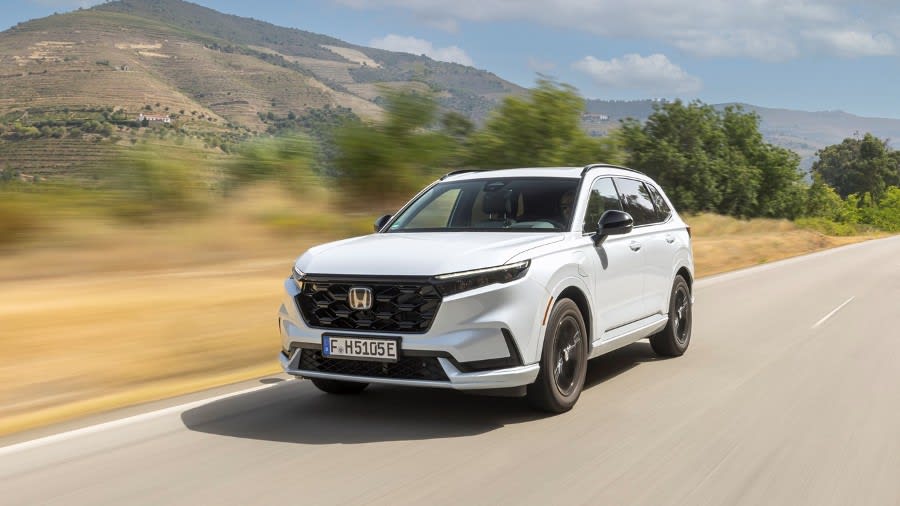
The front grille has been transformed. So, rather than the limited height of the old version, it’s now the centrepiece, taking arguable inspiration from Audi thanks to its imposing hexagonal shape.
A mesh of wide hexagons fills the gap, with proportionally smaller ones on the lower grille, with carved bodywork lower down, giving it an aggressive, sporty appearance.
The headlights are thin, giving off a much angrier look than the outgoing model, while an LED light bar spans the entire width of the front end, neatly separating it from the bonnet.
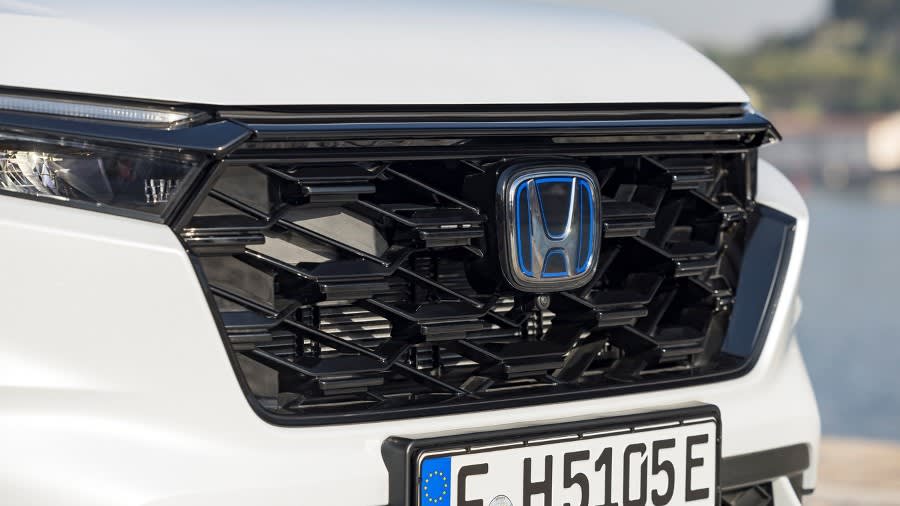
There is a reasonably substantial crease above the door handles, while an indentation in the sides just above the skirt compliments the slightly flared wheel arches.
Chrome surrounds the windows while, at the back, there are three rear lights on each side, illuminating in a rounded ‘L’ shape on the left and a 'J' on the right.
Two wide tailpipes complete the look, one on each side, sandwiching a few modest bumps in the rear bodywork to create a splitter effect, which is slightly more pronounced on the top-of-the-range version.
While it still won't be pleasing to all pairs of eyes, it's a vast improvement on the old model and sets the tone nicely to transform the CR-V entirely.
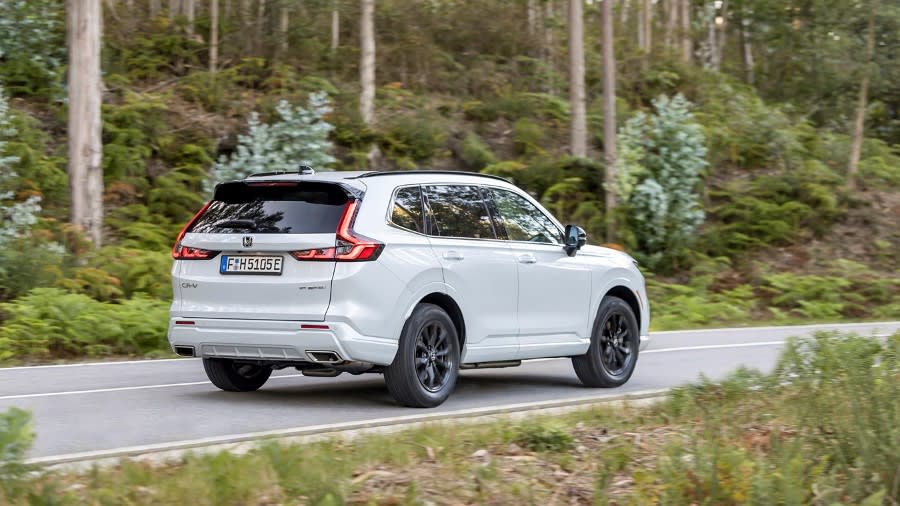
Key Features
Honda’s slogan has, for many years, been the Power Of Dreams, and, with that, it tends not to skimp on the technology it offers on its cars, even at entry level.
The base model, Elegance, gets 18-inch alloys, a 9.0-inch Honda Connect infotainment system with DAB radio and SatNav, Apple CarPlay and Android Auto, a 10.2-inch digital driver’s display, heated leather steering wheel, leather seats, keyless entry and start, a powered tailgate and a panoramic glass roof. Front and rear parking sensors, a rear-view camera, LED lights, and a wireless charger (three times more powerful than the outgoing model's) complete a generous offering for the bottom rung of the ladder.
Mid-range Advance trim adds heated front seats, an adaptive driving beam, a head-up display, an electronic driver's seat adjustment with memory function, a multi-view camera, a Bose premium audio system, and four extra speakers.
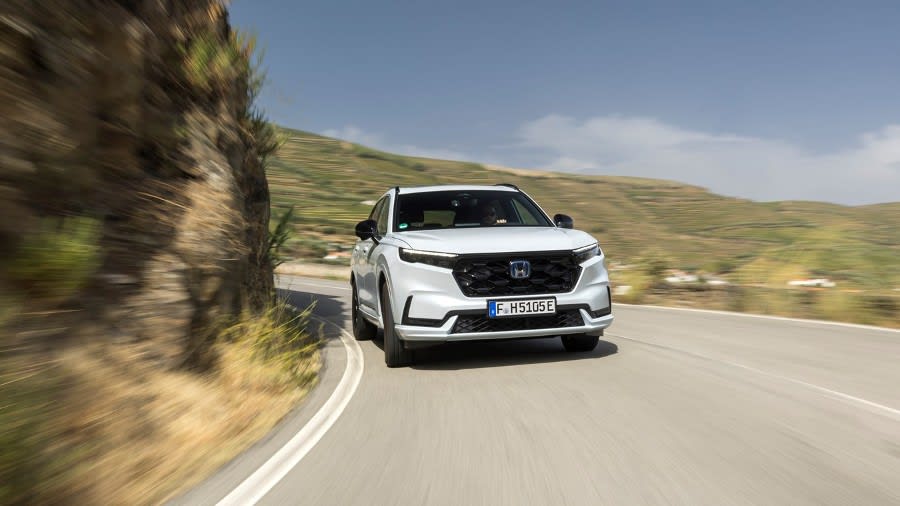
Top-of-the-range Advance Tech gets 18-inch Berlina Black alloys, Honda Parking Pilot (which will automatically park the vehicle for you) and My Honda+, which provides a range of connected services accessible from your smartphone.
In terms of powertrains, there are two versions – a self-charging hybrid (called e:HEV) and a plug-in hybrid (called e:PHEV) – both of which are based on 2.0-litre four-cylinder petrol engines, producing 184PS.
However, the self-charging hybrid is only available on the Elegance and Advance trims – while the plug-in hybrid isn’t.
If you want the e:PHEV version, you'll have to fork out for the top-of-the-range Advance Tech trim, which isn’t available in self-charging form.
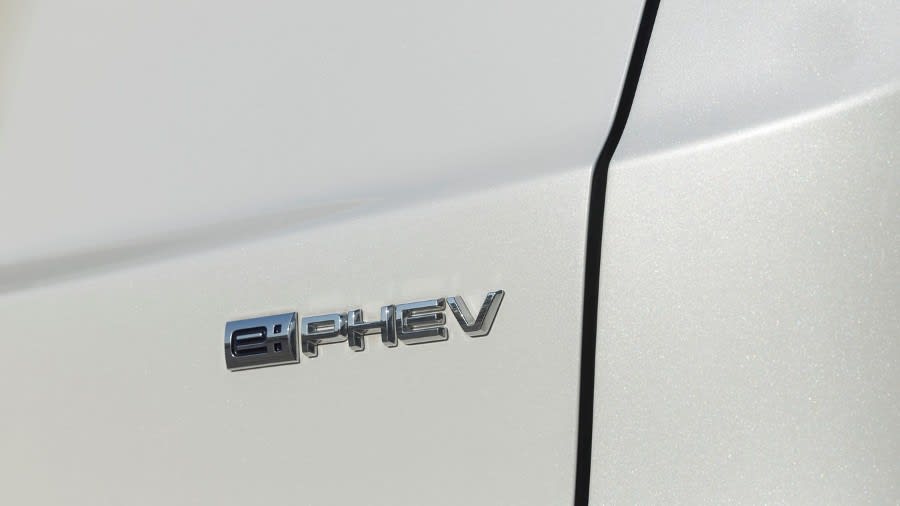
If that causes you to groan in disappointment at the thought of plug-in models being significantly more expensive than their non-plug-in counterparts, the leasing price difference isn’t as steep as you might think.
There is one potentially big downside for plug-in fans, though.
Usually, when a car is offered with front-wheel drive, the plug-in hybrids offer a meaty enough electric motor to power the other two wheels, creating a four-wheel drive vehicle.
In the case of the CR-V, however, it’s the other way round, with the self-charging version having all-wheel drive, while the plug-in hybrid is front-wheel drive only.
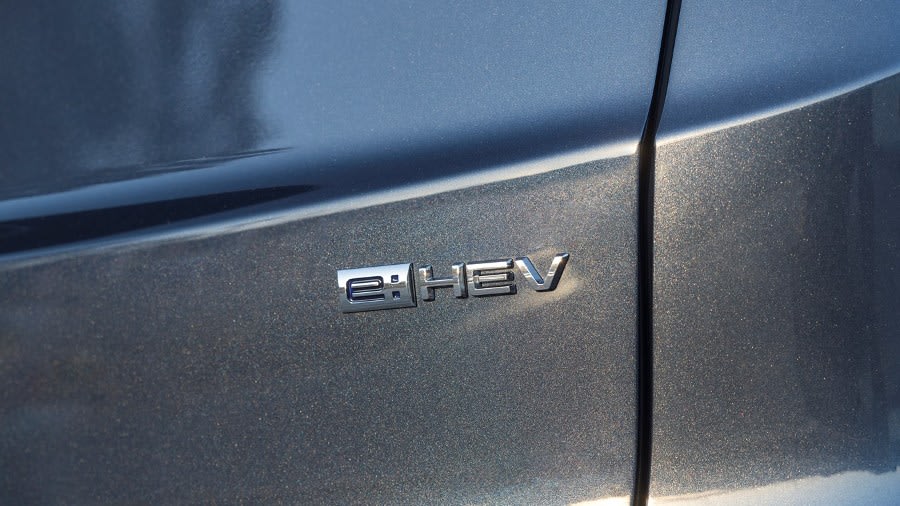
So, if you were hoping to take the e:PHEV on a dirty off-road track, you’re likely to be disappointed, but then the CR-V has never been about creating a 4x4, as its roots are in the crossover market, even if it seems to be moving away from that now.
The e:PHEV offers a new Tow driving mode, configuring the gearbox to pull up to 1,500kg (braked).
The self-charging e:HEV version doesn't have the Tow mode, and, as such, it's restricted to pulling half the weight.
Annoyingly, if you’ve got a large family (or lots of friends), you'll be disappointed to learn that, despite its increased size, it's still only a five-seater.
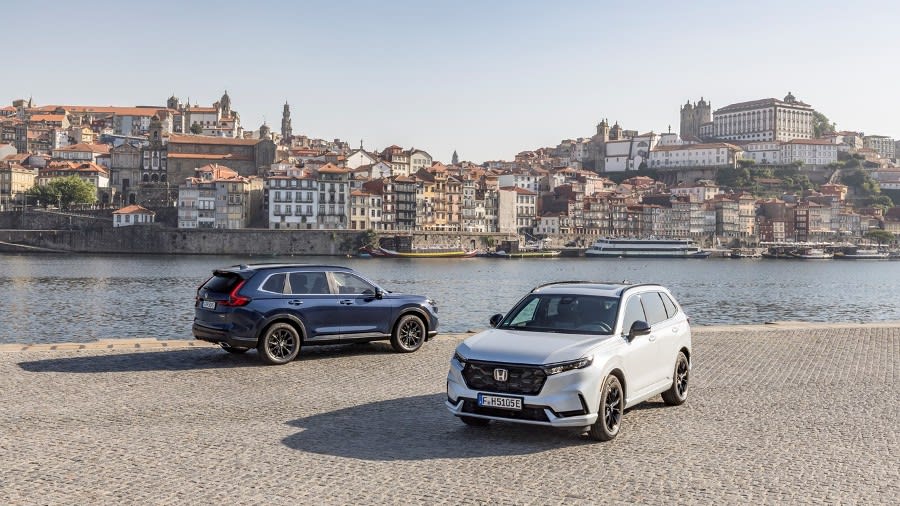
Range & Batteries
The e:PHEV’s 17.7kWh battery is suitable for a claimed all-electric range of 50 miles.
In the real world, expect less than this, as the range depends on several factors, including temperature, weather conditions and driving style.
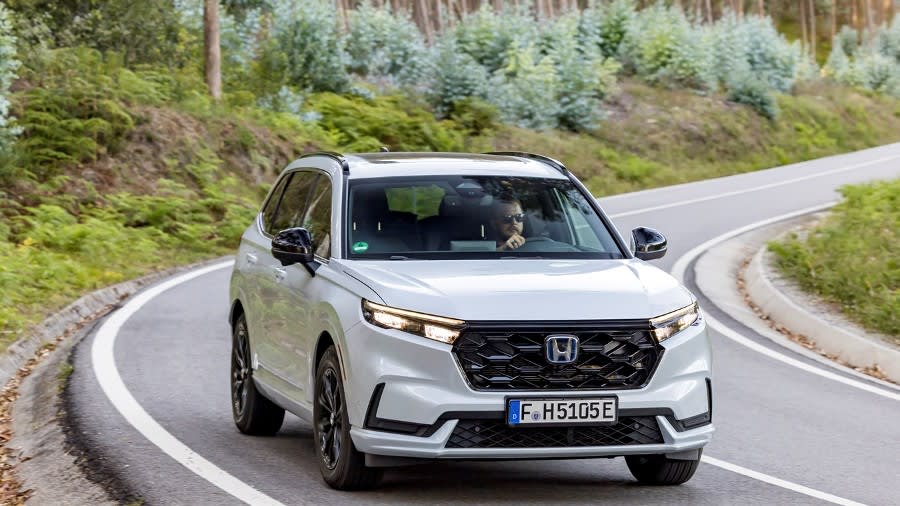
Performance & Drive
Despite the self-charging and plug-in versions having noticeable differences – not least, the former having all-wheel drive versus the latter's front-wheel drive – both have the same 184PS power outputs.
As a result, Honda says the 0-62mph times of both are identical: 9.4 seconds.
Both produce an instant burst of torque off the line, especially in the e:PHEV, meaning the CR-V feels deceptively brisk.
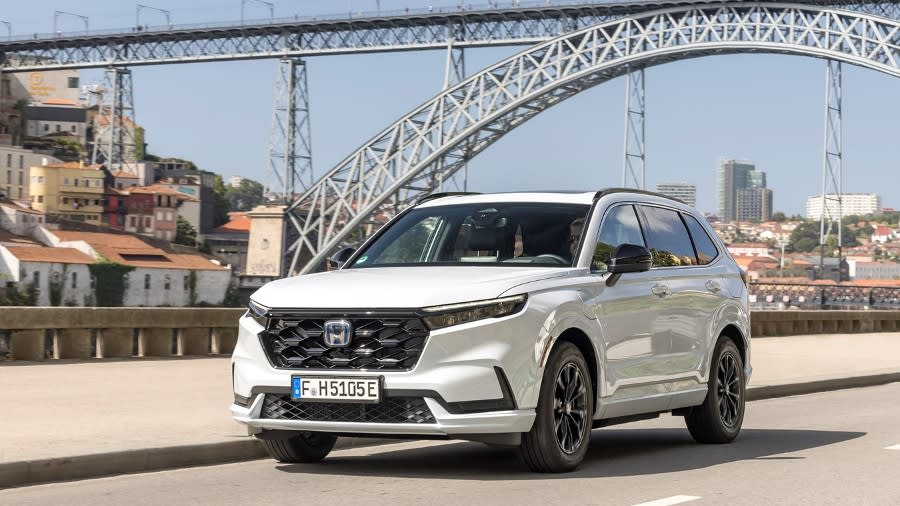
Still, a sub-10-second 0-62mph time is more than adequate for a relatively large SUV, and it’s reasonably adept at overtaking on motorways for a vehicle of its size.
The suspension set-up in the CR-V treads the tricky tightrope of comfort versus handling well.
It is relatively middle-of-the-road, meaning it's soft enough to leave you relaxed after a long journey while maintaining a reasonable level of competence in cornering.
While some rivals have an even softer setup and others have far superior handling, the CR-V aims for a decent blend.
On the other hand, it’s still a pretty big SUV, so we weren’t surprised to get plenty of lean around bends, more so than the likes of the BMW X3, which is to be expected, though admittedly, it performed better than we anticipated.
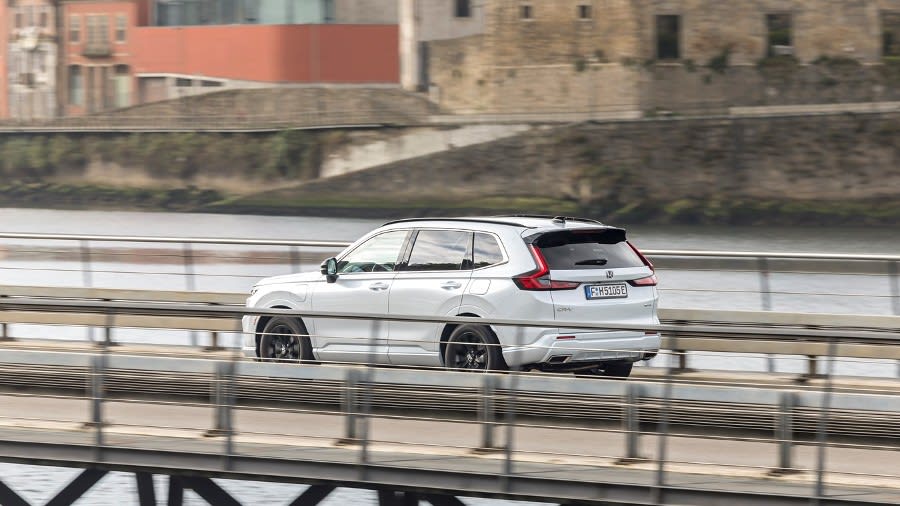
The steering could be better, although this is one of a few cars whose steering is heavy rather than too light.
At least this should prevent you from over-correcting the inevitable understeer you’ll encounter on corner entry if you’re going a bit too quickly. Best to take things a little slower than we did, then, and you’ll be fine.
If handling is high up the priority list, then there are certainly worse SUVs you can lease, but then no manufacturer (not even BMW) makes one that’ll handle like a Honda Civic Type-R.
The one intriguing thing is that the e:PHEV offers adaptive dampers, which, in theory, adjust themselves depending on which driving mode you're in.
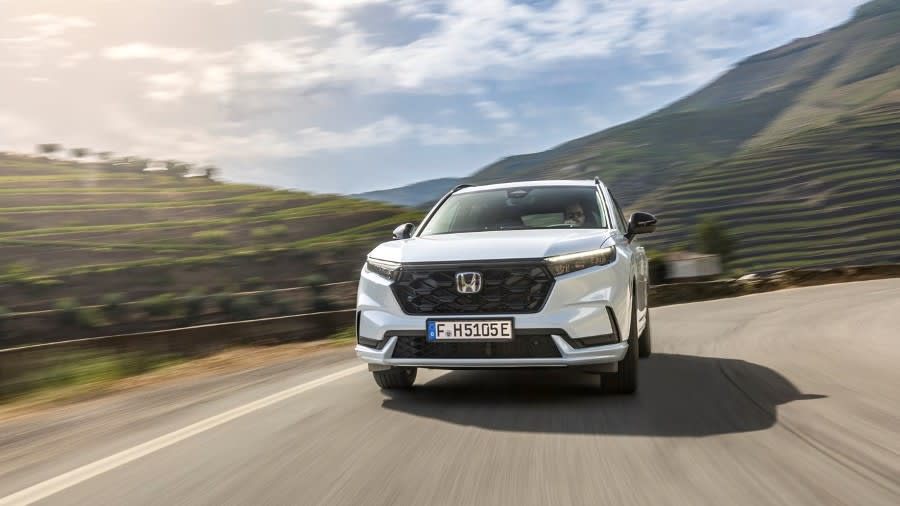
The CR-V offers three modes: Normal, Sport and Econ (short for Economy, obviously), with a couple of additional settings in the e:PHEV.
We were hard-pushed to tell the difference in handling in all driving modes, and there's little substantial difference between the e:HEV and the e:PHEV versions.
On balance, we prefer the e:PHEV and spent most of our time driving it.
But then, with winter just around the corner, we also like the reassurance of the e:HEV’s all-wheel drive, so it’s a tricky dilemma that’s best resolved by choosing the model that meets your needs best.
Although, as we said earlier, a 4x4 has never been the true purpose of the CR-V, it seems counterintuitive to exclude all-wheel drive on the e:PHEV, given the e:HEV has it as standard.
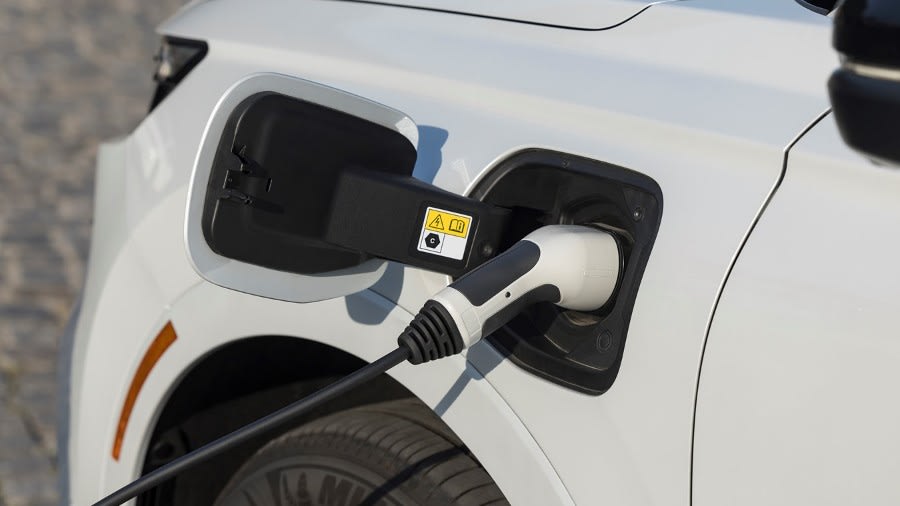
Charging
The CR-V e:PHEV’s 17.7kWh battery will charge at a maximum rate of 6.8kW.
That means you can get from empty to full in just 2.5 hours if you’ve got a home wallbox capable of that speed.
The downside is that if you plug it into a charger capable of far faster speeds, it won’t charge any quicker, which is a drawback if you want a fast top-up.
This should help to maximise long-term battery life, though.
One benefit of the e:PHEV is that, while it’s charging, you can turn on the heat for the seats and steering wheel in advance. That will make things more bearable on a frosty winter’s morning.
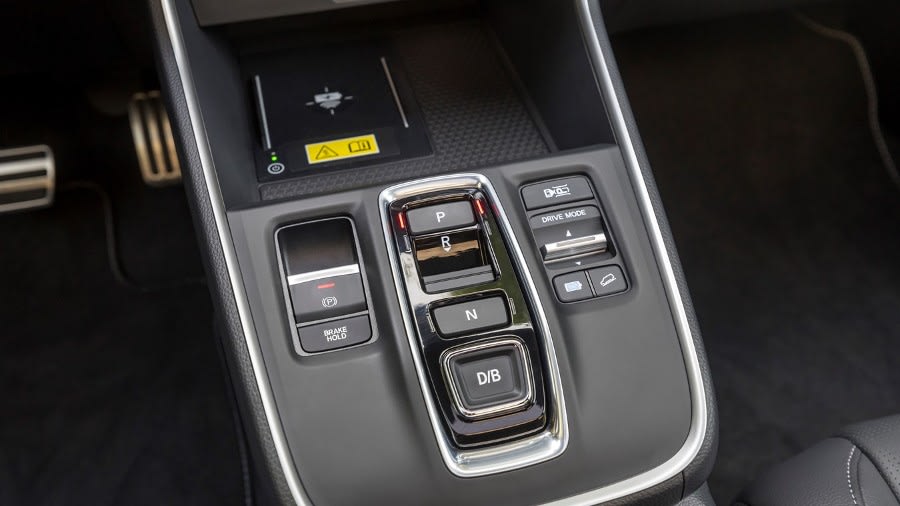
Running Costs & Emissions
Any big SUV that can do 40mpg is doing well – especially if it’s got a petrol engine.
Thanks to the help of the electric motor, the e:HEV returns 42.2mpg, emitting 151g/km of CO2 in the process, which is good for a vehicle with all-wheel drive.
The e:PHEV, however, trounces its sibling, managing a claimed 353.1mpg, producing just 18g/km of CO2, although that figure depends on you having the battery charged up.
If it isn’t, you’ll be using the engine on its own, which will return around 45mpg.

As we said earlier, your circumstances will dictate whether to go for self-charging or plug-in versions – and one reason to go for the latter is if you’re after a company car.
If you want to make significant savings in Benefit In Kind (BIK) tax, there’s little point in going for anything but a plug-in hybrid or all-electric car nowadays.
In terms of reliability, Honda isn't quite top of the league, but it's still one of the best in the business, so hopefully, the new CR-V will be dependable.
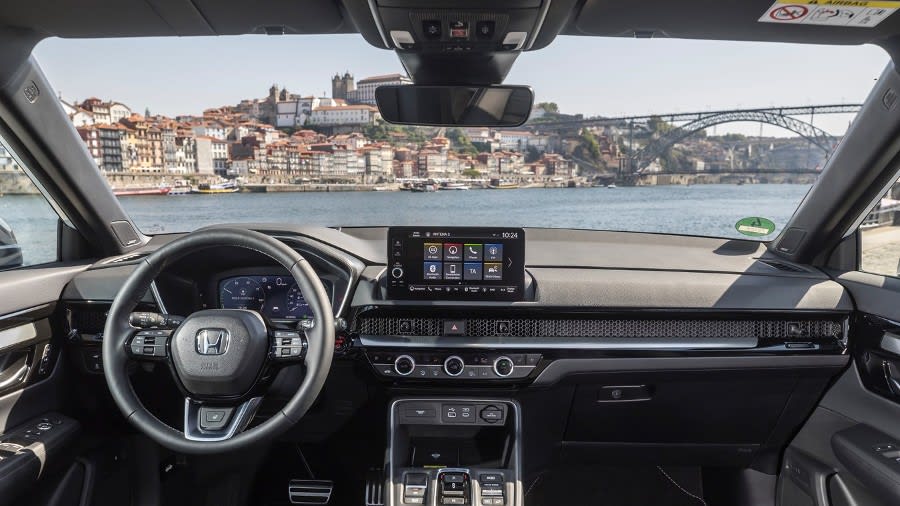
Interior & Technology
The CR-V’s interior has been given a substantial makeover, too, and will look instantly familiar to anyone who’s seen the inside of the latest Civic.
A bold multi-function steering wheel with a thick middle airbag compartment sits in front of a horizontal line of hexagonal mesh, which runs across the dashboard, neatly dividing it in two.
Above the mesh sits the infotainment screen, which is positioned on top of the dash like a resting tablet, and beneath are three dials for the climate control, which is thankfully not built into the touchscreen.
Beneath that, there’s no gear lever. Instead, you choose from a selection of buttons – and behind that, you’ll find a tray-like device for storing and wirelessly charging your phone, complete with a built-in cooling fan to stop it from overheating on a hot day.
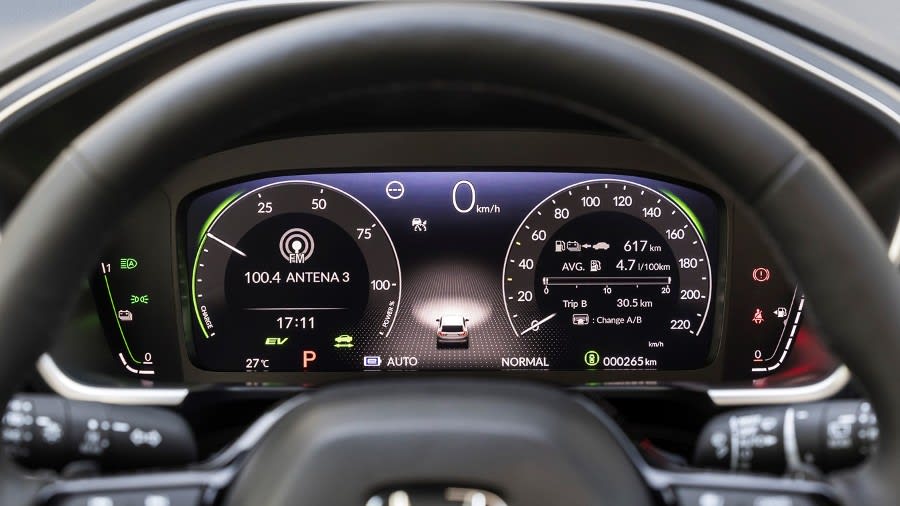
The infotainment screen is crisp, clear, responsive, and reasonably intuitive. However, the lack of a physical controller makes it a little fiddly to operate on the move.
The digital driver’s display behind the steering wheel is nice, too, replacing analogue dials with a second screen, which provides a lot of helpful information.
It is good, but some rivals have more options for customising what information it shows.
Elsewhere, metal pedals, stitched leather-effect door upholstery and a pleasant multi-colour interior made up of piano black, grey, silver and a dash of brushed aluminium in places give it an impressively premium feel.
Yes, some of the plastics feel a little cheap, but we're nit-picking, and it’s by no means a deal-breaker.
Indeed, this is arguably the most impressive Honda interior to date, and it feels like the refinement has gone up a couple of levels.
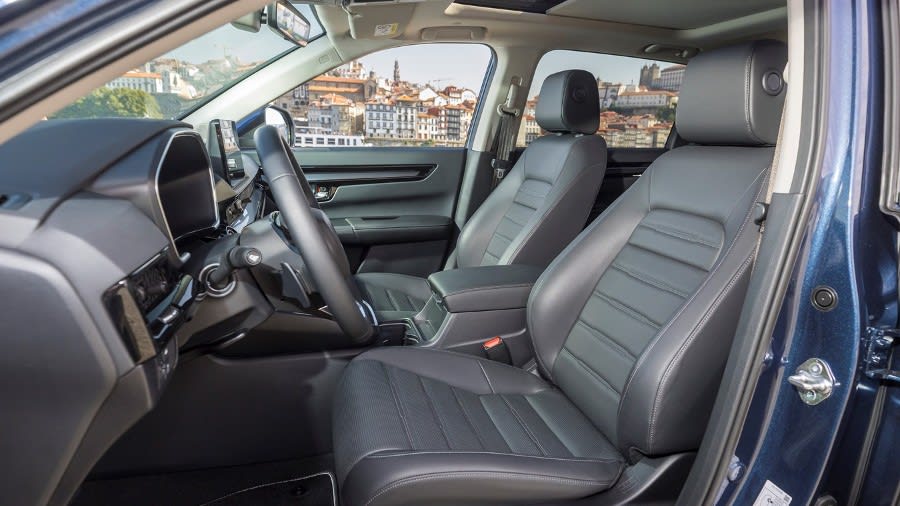
Practicality & Boot Space
The CR-V is bigger than ever – a total of 8cm longer than the old one – and, thankfully, it's more practical than ever.
It is also comfortable, offering a commanding driving position, while lumbar support is included as standard.
Adjusting your seat is easy thanks to the electric motors in the driver’s seat – and you can then save your seating position using the memory function.
The electric seat adjustment isn’t included on the entry-level e:HEV model, though, while the passenger seat lacks height and lumbar adjustment.
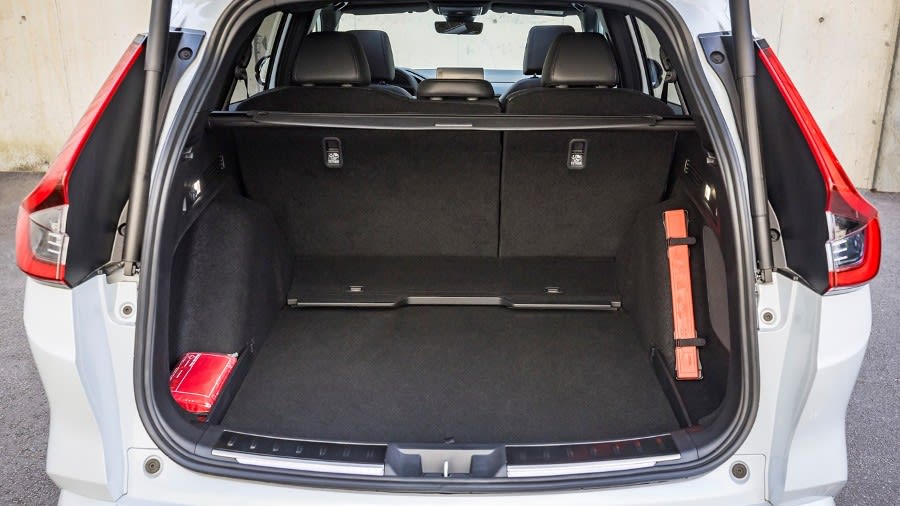
There is a lot of space in the front, meaning you can sprawl out over longer journeys to keep yourself as relaxed as possible.
The extra cabin volume has benefitted the rear, too, so you’ll comfortably fit two fully grown adults in the back – and three won’t feel too bunched up either.
The e:HEV offers 596 litres of boot space, while unusually, the e:PHEV offers even more, measuring 635 litres.
Honda hasn’t provided figures with the rear seats folded down – and they only fold in a 60/40 split rather than the more convenient 40/20/40 – but the expanded capacity is likely to be a cavernous figure.
If you don’t need it all, then the rear bench can slide and recline, meaning you can customise the trade-off between rear legroom and boot space to suit your needs on any given day, while reclining the seats will provide more headroom.
While the boot looks impressively large, the additional space in the new CR-V feels like a missed opportunity to accommodate two extra small pop-out seats, given it’s still not a seven-seater.
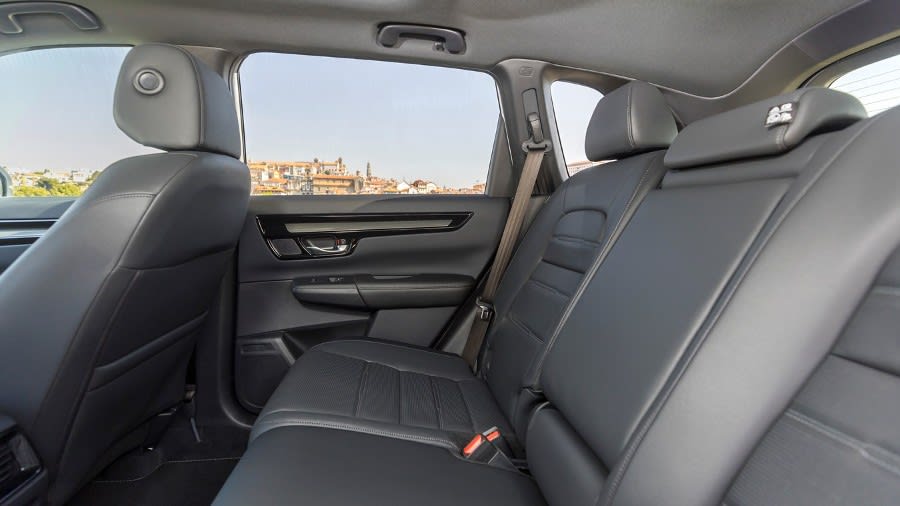
Safety
The new Honda CR-V has yet to be crash-tested by Euro NCAP, but there should be few worries here.
Honda prides itself on safety, even launching a strategy to achieve zero road fatalities by 2050 in its vehicles – a target including its extensive motorbike range.
The old CR-V achieved a five-star safety rating in 2019, scoring 93% for adults, 83% for children and 76% for safety assists.
Thirteen of the last sixteen Hondas have been awarded five-star ratings – and the three that didn’t earned four-star ratings.
The CR-V comes with Honda Sensing 360 as standard on all models, which includes omnidirectional blind-spot and cross-traffic monitoring.
You also get automatic emergency braking, lane-keep assist, driver attention alert, lane-departure warning, plus traffic sign recognition.
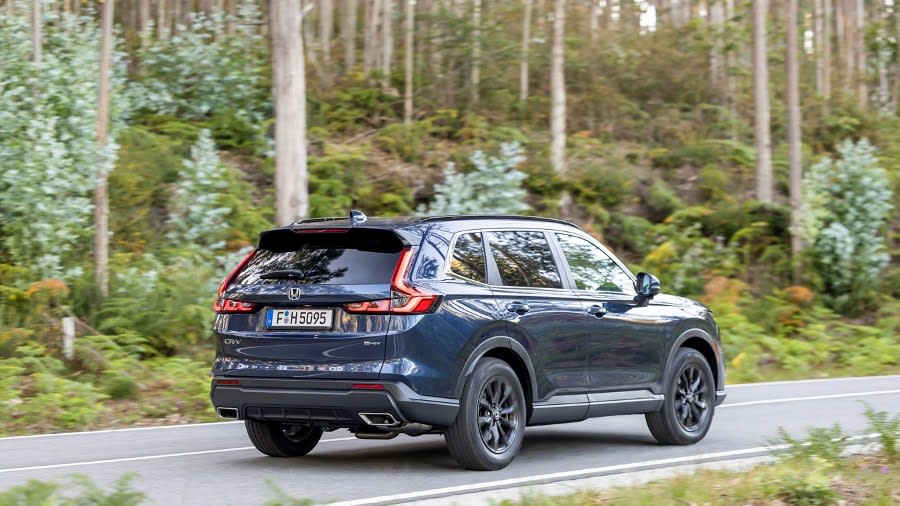
Options
Honda still needs to reveal the complete options list for the CR-V, but it'll likely be limited, given it comes with quite a lot of kit as standard.
We expect lesser trims may get the option to add some features included as standard on higher models.
Silver mirror caps, 19-inch alloys, illuminated door sills and various accessories such as boot organisers were included in the old model, so we'll expect a similar offering this time too.
Rival Cars
There is no shortage of leasing rivals for your money, with the likes of the Kia Sportage, Hyundai Santa Fe and Volkswagen Tiguan lying in wait.
The Mazda CX-5 and Citroen C5 Aircross are also worth looking at, as is the Peugeot 5008 or the smaller 3008, plus the BMW X3 if you’re feeling more upmarket.
Elsewhere, the Nissan Qashqai (below) continues to be as popular as ever, while there’s also the Toyota RAV4, Ford Kuga and Suzuki Across.
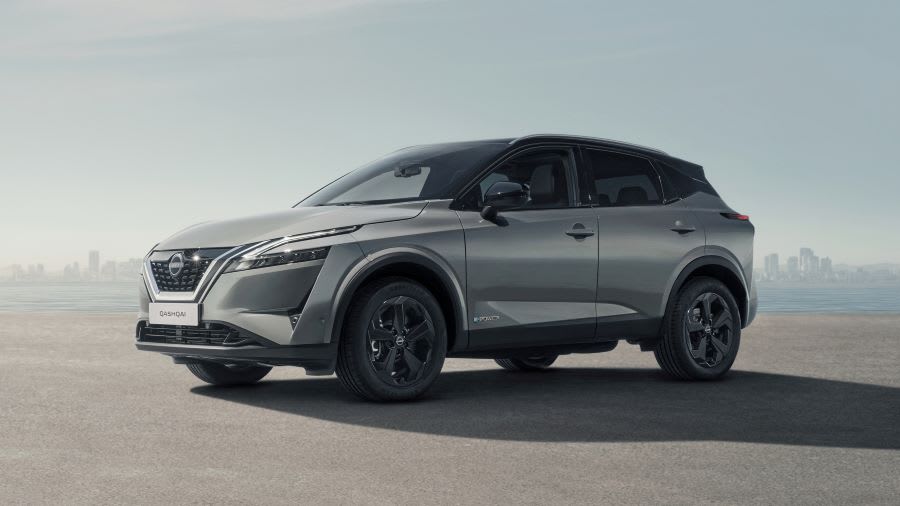
One thing to check is the equipment levels, as the Honda CR-V comes with plenty of kit, even at entry level.
Another thing to bear in mind is that if you choose a plug-in hybrid, they often have less boot space than the non-plug-in models, with the CR-V plug-in’s larger boot being a rare exception to the rule.
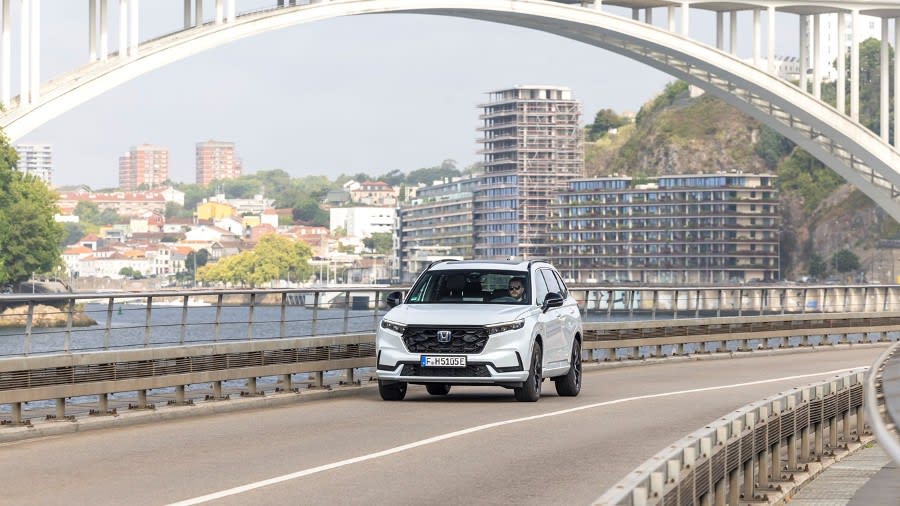
Verdict & Next Steps
Overall, the Honda CR-V is a very decent car which comes with a generous level of standard equipment.
That is worth factoring in as, although it's pricey compared with some of its competitors, most won't come with the same amount of tech at entry-level.
It is a big car, too, which is great if you need the extra practicality in terms of rear space and the boot, but the lack of a seven-seater option will inevitably rule some customers out.
The CR-V is also economical, especially if you go for the e:PHEV and keep it charged.
It is comfortable, and although it's not especially athletic or powerful, it's more than adequate for most people's needs.
It is on sale and ready for leasing now, with deliveries starting in October for the e:PHEV and November for the e:HEV.
Without a doubt, the CR-V has taken a big step forward.
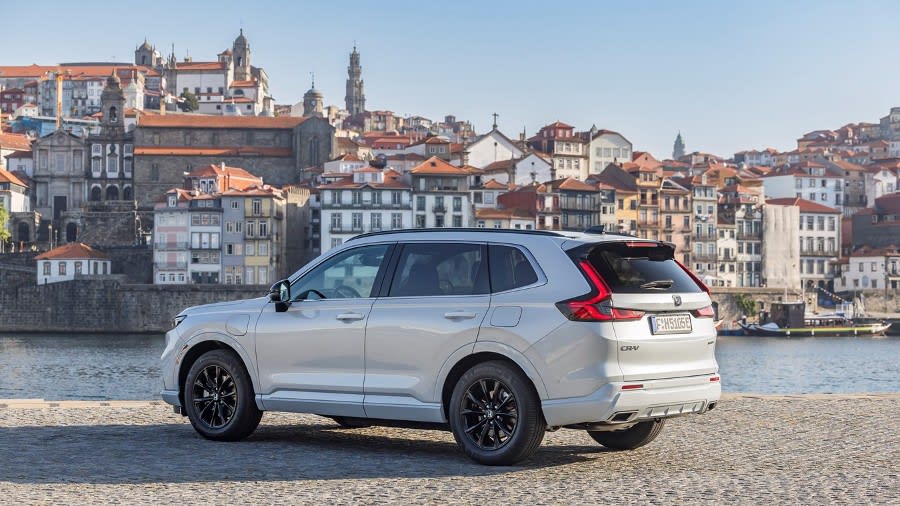
Where to next?
View latest Honda CR-V leasing deals - from just £447 per month inc VAT**.
Call us on 0118 3048 688 or hit the green 'Enquire' button for more details.
Looking for a great leasing deal? Check out our incredible range of car lease deals.
New SUV? Read our latest Car Reviews and find the right model for you.
Want to know more about leasing? Take a look at our comprehensive Leasing Guides.
Interested in everything motoring? Why not catch up on all the latest Car Leasing News.
**Score based on Select’s unique meta score analysis, taking into account the UK’s top leading independent car website reviews of the Honda CR-V 2023.
**Correct as of 28/09/2023. Based on 9 months initial payment, 5,000 miles annually over a 48 month lease. Initial payment equivalent to 9 monthly payments or £4,029.03 (Plus admin fee) Ts and Cs apply. Credit is subject to status.





















